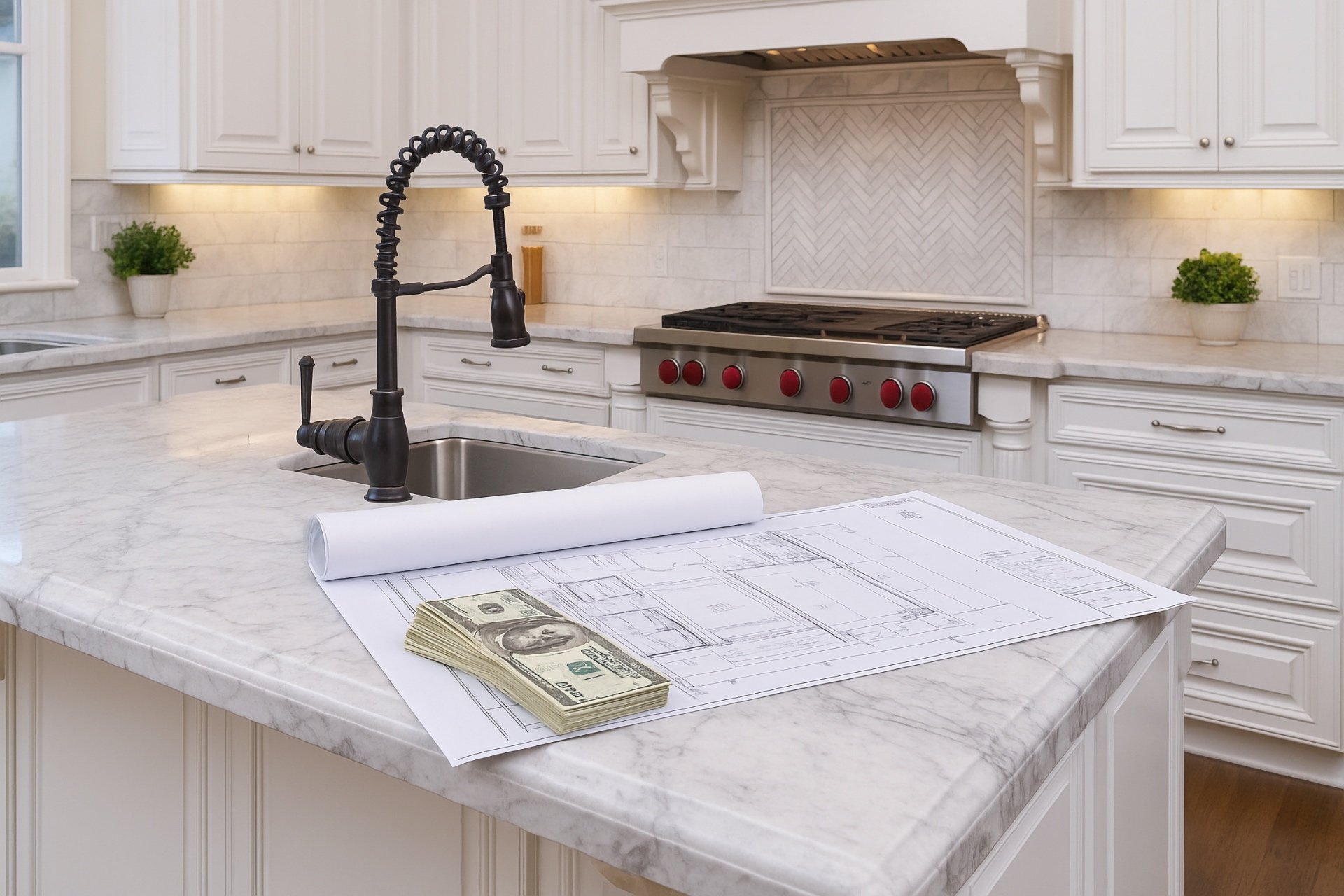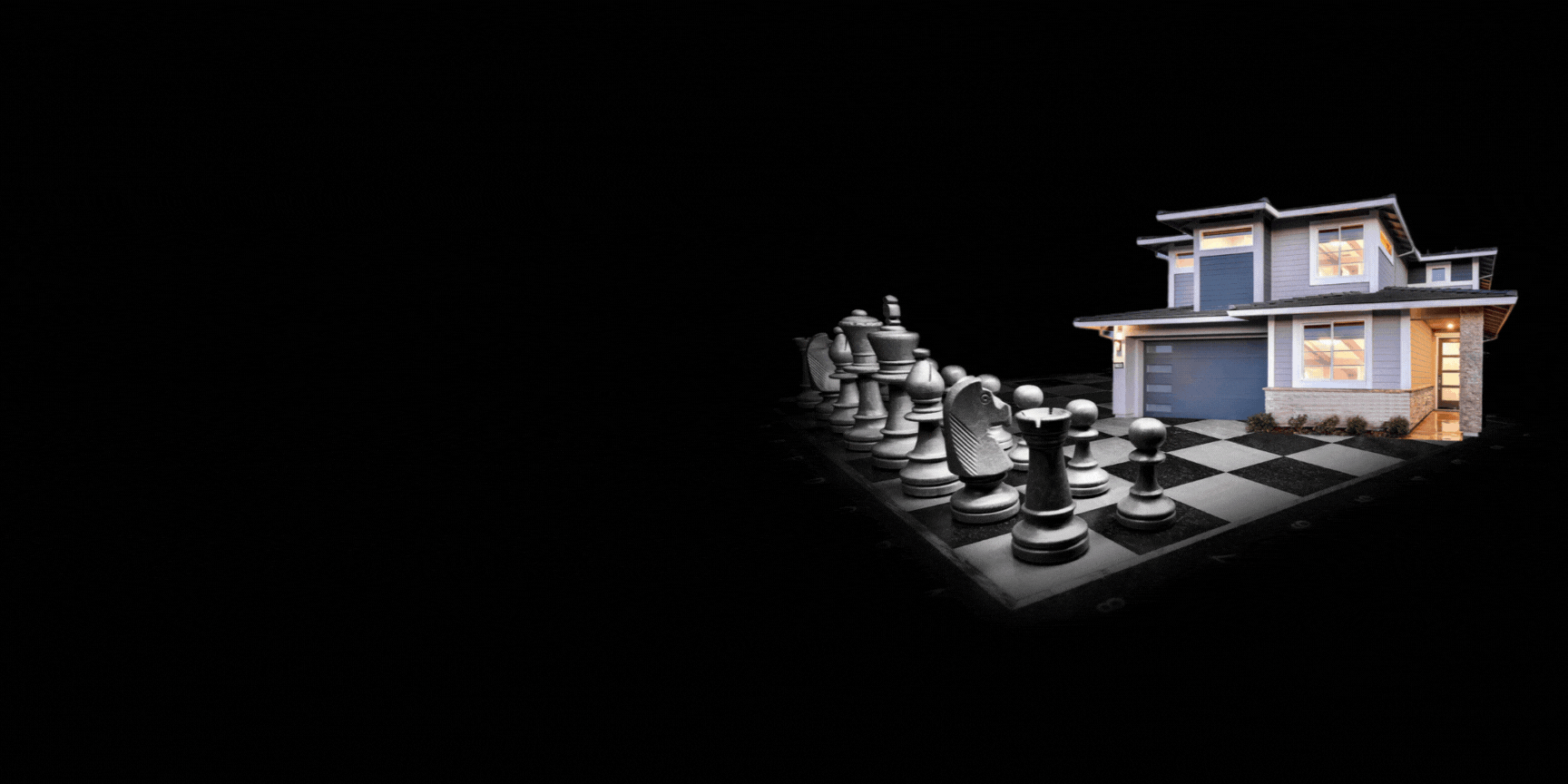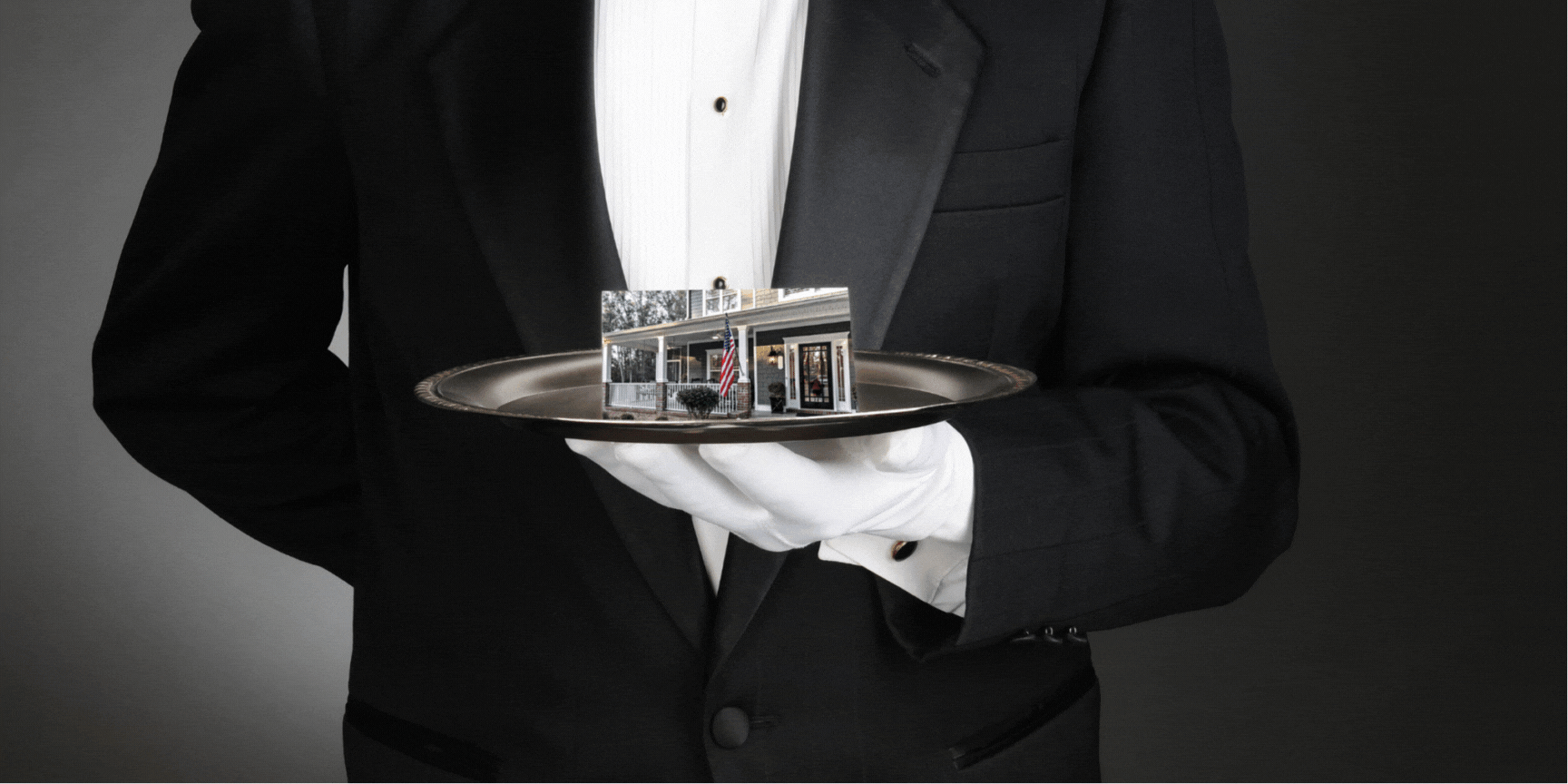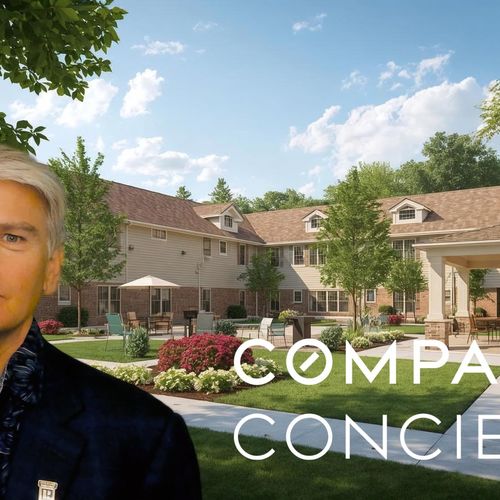One of the recurring challenges I see in Silicon Valley real estate is what happens when a homeowner pours time, effort, and money into creating a bespoke custom design for their property. Every surface may exude the highest quality, and the craftsmanship may be impeccable, but when it comes time to sell, sellers are often shocked to find that buyers aren’t willing to pay anywhere close to the cost for those custom upgrades.
The problem isn’t quality. The problem is fit. What works beautifully for one homeowner’s taste doesn’t always translate into added market value when it’s time to resell. In fact, the opposite is often true: highly personalized finishes can actually shrink your pool of buyers and force you to accept far less than the money you thought you were investing.
The Bespoke Suit Analogy
The best way I can describe this challenge is with an analogy.
Imagine a man goes to an upscale men’s clothing store to buy a new suit. On his way in, he sees someone standing outside wearing a stunning bespoke suit — perfectly tailored, beautifully styled, and made of the highest-quality fabric.
The buyer admires it and says, “Wow, that’s a beautiful suit!”
The man wearing it replies, “Thanks! Want to buy it? It cost me $2,000, and I’ve only worn it a few times. I’ll sell it to you right now for $2,000.”
While the buyer loves the craftsmanship, the truth is that the suit isn’t quite his fit. The proportions were tailored to someone else’s body. The fabric pattern looks amazing on the man wearing it, but it doesn’t align perfectly with the buyer’s personal style.
Now, if the buyer is going to pay $2,000 for a suit, he’s going to go inside the store and get one custom-tailored to him — not buy a secondhand version of someone else’s bespoke garment.
He might consider the suit if the price were attractive enough, but there’s no way he’d pay that kind of money for a second-hand suit that really wasn’t what he is looking for. After all, why pay full price for something that isn’t quite your style, when you could spend the same money – and often much less – on something that fits perfectly?
This is exactly what happens with bespoke homes and custom upgrades in Silicon Valley real estate.
Why Custom Upgrades Rarely Translate Into Higher Resale Value
1. Buyers Want Their Own Vision
When buyers pay top dollar for a Silicon Valley home — and in this market, that often means multiple millions of dollars — they want the home to reflect their tastes, not someone else’s. Even if your imported tile or hand-carved cabinetry is stunning, if it doesn’t align with the buyer’s vision, the buyer will look at it as a waste of their money (and probably yours).
2. Luxury Doesn’t Mean Universal Appeal
Not all luxury is created equal. A $50,000 La Cornue range or a one-of-a-kind Venetian plaster finish may impress some buyers, but others see it as over-the-top or not aligned with their lifestyle. One person’s “dream upgrade” is another person’s “tear-out project.”
3. Over-Personalization Narrows the Buyer Pool
Silicon Valley buyers already have specific requirements: commute times, school districts, neighborhood amenities, and lot size all matter. Add to that a design that’s too tailored to one individual’s taste, and you’ve just narrowed the pool further. Instead of appealing to the broadest swath of buyers, you’re hoping to find the one buyer whose style matches yours exactly. That’s a dangerous gamble in any market, and frankly it’s a losing bet most of the time.
4. Appraisers Don’t Credit Custom Finishes
Even if you spent $200,000 on high-end, bespoke upgrades, appraisers won’t automatically increase your home’s valuation to match. They base their numbers on comparable sales in your area, and most comps won’t include your unique finishes. As a result, your upgrades are valued at pennies on the dollar.
Why “One of a Kind” Homes Are Worth Less
I encounter homeowners all the time who are justifiably proud of their “one-of-a-kind” homes, with design elements or architectural styles that truly stand apart. But when I talk with sellers, I explain that uniqueness in housing doesn’t necessarily translate into higher resale value. In fact, the opposite is often true: if there were a decent market for homes like these, they wouldn’t be one-of-a-kind — builders and speculators would have replicated the style over and over to meet demand.
By contrast, look at the classic single-level California ranch style home. Far from unique, there are millions of them across the country, yet they remain among the most desirable and marketable home types. Their simplicity, functionality, and broad appeal keep them in consistently high demand, which is exactly why their resale values hold strong. In real estate, it’s not uniqueness that drives price — it’s marketability. Prices are driven, always, by the balance of supply versus demand – and the demand for these homes keeps prices high while also keeping supply low, since owners of these homes tend to stay in them for multiple decades.
The Silicon Valley Factor: Why It’s Especially Risky Here
The Bay Area real estate market is unlike any other. Prices are among the highest in the nation, fueled by the tech industry, limited housing supply, and intense demand. But because buyers are paying so much just to get into the market, they want homes they can customize to their own lifestyle.
Here’s what I see over and over:
-
A seller invests $400,000 in highly customized luxury finishes.
-
The home sells for $200,000 more than it might have without the renovations.
-
On paper, that looks like a win. But when you account for the costs of renovation, holding expenses, and stress, the seller actually lost money.
In a market like San Jose, Palo Alto, or Cupertino, where buyers are already paying millions of dollars, many prefer a blank canvas they can adapt themselves rather than paying an additional premium of hundreds of thousands extra for someone else’s idea of chic.
Data That Supports the Reality
This isn’t just anecdotal — it’s backed by industry data.
The Remodeling Cost vs. Value Report consistently shows that most major remodeling projects recoup far less than 100% of their costs. In the Bay Area, even upscale kitchen remodels typically return only 50%–70% of what was spent.
The National Association of Realtors’ Remodeling Impact Report further supports this. While remodeled spaces can increase a home’s appeal, the financial return on investment almost never matches the outlay.
In other words, even when the improvements are well executed, sellers rarely make back what they spent.
Case Study: The Ultra Luxe Upgrades Nobody Wanted
I once toured a home in Monte Sereno that looked like it belonged in a Architectural Digest magazine. The kitchen was chef’s kiss: the homeowner had spent over $250,000 on custom cabinetry, European appliances, and stone shipped from Italy. The primary bathroom was fit for a king, draped in marble, with a steam shower, heated floors, and a hand-carved stone bathtub that looked straight out of a Roman palace. The floors were mainly a sumptuous blend of ebony and mahogany in a sort of parquet style – stunning, in the right light. The home was gorgeous — but also incredibly specific. The colors, layout, and materials screamed bespoke. Potential buyers admired it, but they also whispered about how they would change it: knock out a plastered wall here, repaint the vivid colors for more muted tones, replace the flooring throughout the home, and that bathtub – while amazing – would just have to go.
In the end, the home sat on the market far longer than expected and sold for over $600,000 less than the seller hoped. Why? Because buyers priced in the cost of changing what they didn’t like, and ascribed little value to the design and finishes the seller paid so dearly for.
This is the bespoke suit problem in action: even the most beautiful design loses value if it doesn’t fit the buyer.
What Buyers in Silicon Valley Really Value
Instead of pouring money into custom upgrades, here’s what actually matters to buyers in this market:
-
Location: Proximity to tech campuses, good schools, and amenities.
-
Layout: Open, functional floor plans that support modern living.
-
Condition: Clean, well-maintained homes free of deferred maintenance.
-
Lot Size: Buyers know that ultimately, the enduring value is in the land, not the house.
A neutral, move-in ready home with room for personalization often sells faster and at higher net proceeds than a heavily customized property.
The Illusion of “Value-Adding” Upgrades
Many real estate agents inadvertently encourage homeowners to over-renovate. To win a listing, they may suggest high-end upgrades under the promise that “buyers will pay more” – and that they’ll help the sellers get all the work done, quickly, and for low prices to assure a maximum return on investment.
But what they don’t tell their clients is that while the sale price may increase, the seller’s net profit doesn’t. The extra money goes to contractors, material suppliers, and carrying costs, not into the seller’s pocket. Agents aren’t contractors, and they aren’t appraisers, and they aren’t flippers – they just watch the same HGTV programs you do, and feel they know how to profitably add value…because that’s what they saw Chip and Joanna do on TV.
Flippers in Silicon Valley know this all too well. They don’t pay fair market value for homes on the MLS and then add renovations. They buy off-market at discounts because that’s the only way the math works. If custom upgrades truly added profit at resale, flippers would be doing them every day at full market value. The fact they don’t is proof enough.
The Smart Seller’s Playbook
If you’re a homeowner in the Bay Area thinking about selling, here’s the smarter approach:
-
Fix what’s broken. Buyers care about functionality more than flashy finishes.
-
Neutralize your design. Fresh paint in neutral tones goes further than ornate wallpapers.
-
Declutter and clean. Nothing turns buyers off faster than clutter and grime.
-
Maximize light and space. Simple updates like lighting and landscaping pay big dividends.
-
Leave room for imagination. Buyers want to picture their own upgrades, not live with yours.
This approach costs far less, attracts more buyers, and nets you more money than pouring resources into bespoke upgrades.
Conclusion: Bespoke Doesn’t Mean Profitable
Bespoke custom designs and upgrades may bring you joy while you live in your home, but they rarely bring you profit when it’s time to sell in Silicon Valley.
Just like the bespoke suit that looks incredible on the man who had it made, your home’s personalized finishes may not fit the next buyer. And when someone is paying millions for a property, they’ll want to have a home with a style that’s all their own. That means they won’t pay full price for your custom upgrades — and they may even discount their offer to account for the changes they plan to make.
For Silicon Valley homeowners, the proof is clear: if your goal is to maximize profit at resale, skip the bespoke upgrades. Focus instead on presenting a clean, well-maintained, and neutral home that appeals to the widest pool of buyers. Save the customizations for the home you plan to live in long-term, not the one you’re preparing to sell.
Silicon Valley Luxury Homes for Sale
2
3
4
5
6
7
8
9
10
11
12
13
14
15
16
17
18
19
20
21
22
23
24
25





